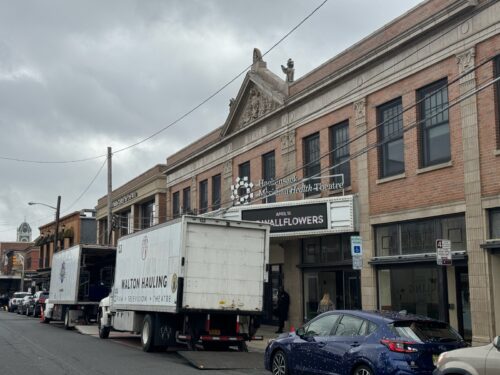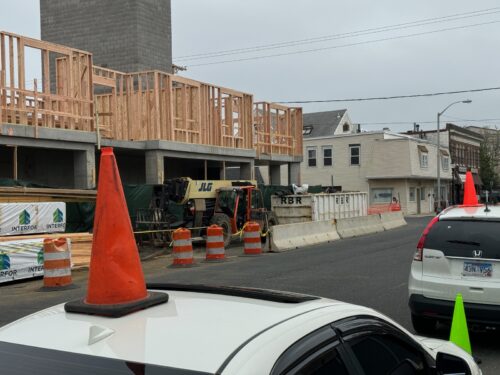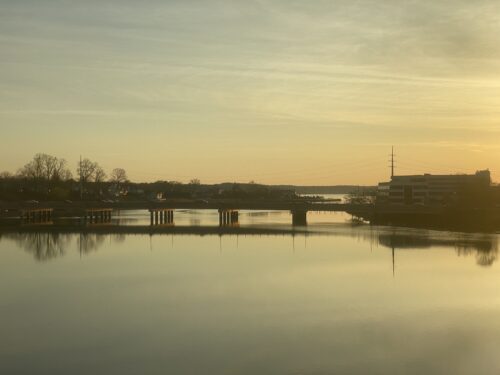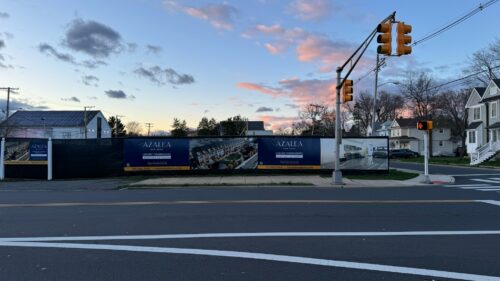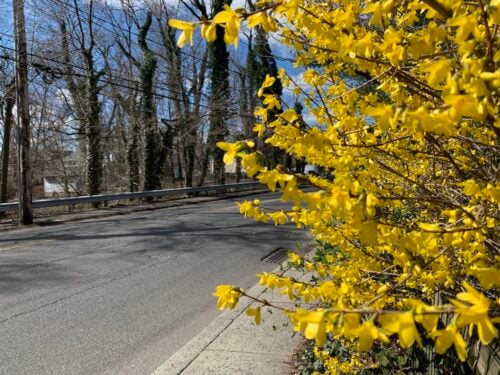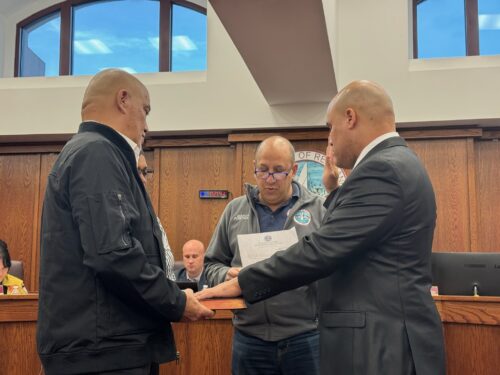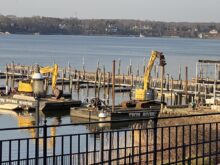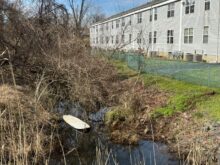
By MOLLY MULSHINE
A decision on they type of bridge that will replace the aging Oceanic Bridge between Middletown and Rumson may still be two years away, but area residents are emphatic: they don’t want to see the historic drawbridge replaced with a structure three times its size.
Residents of the two towns packed Rumson’s borough hall Monday night to voice their opinions about the issue Monday night.
The hearing was held on the orders of the New Jersey Department of Transportation, which hopes to move forward with reconstruction plans but needs input from the public before selecting a design for the bridge, according to Monmouth County engineer Joe Ettore.
The bridge, a two-leaf bascule structure, was built in 1939 and is in serious need of repairs, Etorre said.
Ettore presented six plans for the bridge. The county has considered either rehabilitating the bridge as it is or removing it, but neither of these is a viable option, Ettore said. Rehabilitation of the historic structure would only last 20 years or less, while a new construction would be in good condition for approximately 75 years, he said.
Instead, the county must choose among four new construction plans, he said:
A low-level bridge on a new alignment
A low-level bridge on the existing alignment
A high-level bridge on a new alignment
A high-level bridge on the existing alignment.
A low-level bridge would rest approximately 25 feet above the mean high water mark, while a high-level bridge would be 55 to 65 feet above that mark, Etorre said.
Also, placing the structure on a new alignment would reduce the need for detours during construction, as it could be built parallel to the current bridge. Construction on the current alignment would result in a 30-month detour for motorists and pedestrians, which would tack on up to nine additional miles of travel time to cross the Navesink. Construction on a new alignment would result in only six months of bridge closure, he said.
The low-level bridge and its control building would have a similar appearance to the current construction, although the railings would be higher and would have three beams instead of two, in order to bring the bridge to current safety standards, Etorre said.
Residents spoke out in force for a low-level bridge on a new alignment, and asked Etorre how they could ensure the county will select this plan.
“If public comments demonstrate that there’s a large percentage of residents in the area who do use the bridge for other than vehicular purposes,” the plan is “negotiable,” Etorre said. “For pedestrian use, [a high-level bridge] is not as user-friendly.”
This project will seek funding from the Federal Highway Administration, which has the final say on the bridge’s construction. But part of the purpose of Monday’s scoping hearing and the 30-day period afterward during which residents may submit comments to the county and the FHWA is to receive public input on the plan, Etorre said.
“Where the geometry permits, a high-level is the default preferred option versus the low-level. They [the FHWA] have themselves indicated to us that they have approved other replacements with low-level movable bridges, but you have to prove your case and part of doing that is this meeting tonight,” Etorre said.
Kimberly Formato, a runner who lives in Middletown just off the bridge, said it will be difficult for her and other pedestrians to run or walk up the proposed 6-percent grade on a high-level bridge. The current bridge’s grade is 1.8 percent, and a new low-level bridge would have approximately the same incline. Formato expressed fear that pedestrians would be unable to climb a high-level bridge with ease.
“I understand boat traffic and the business and real estate, but just the personal human interest side of all of this, too, is really upsetting,” Formato said. “I need to go over that bridge, as well as I’m sure hundreds of thousands of people every year.”
Joseph McOmber, an attorney from Middletown, spoke on behalf of the Riverside Drive Association, a collection of 240 families who live near the bridge on the Middletown side.
These homeowners are concerned about possible real estate devaluation and the loss of pedestrian use that could occur with a high-level bridge, as well as effects on the area’s aesthetics.
“Most people are concerned because when you look out now, you see a beautiful bridge,” McOmber said after the hearing. “When they put it 70 or 75 feet high, it’s going to be ugly as sin.”
The bridge will be closed this winter for rehabilitation on the bascule, which when completed would enable motorists to continue using the structure when construction on its replacement finally gets underway. The bridge will be closed starting October 12, and the target date for completion is May 20, Etorre said. It will take “at least two years” for the FHWA and the DOT to come to a final design decision.
Etorre encouraged residents to fill out forms with detailed comments to be forwarded to the DOT. These forms will be available online at visitmonmouth.com on September 26, and can be mailed to Inkyung Englehart, Monmouth County Engineering, Hall of Records Annex, third floor, One East Main Street, Freehold, 07728, until October 26.
A similar scoping hearing will take place on Monday, September 26, at Middletown town hall at 7 p.m.





